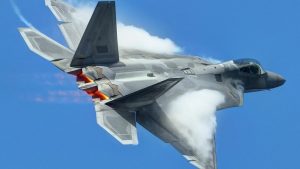Somewhat ironically, despite its terrible battle record, Yamato has become a symbol of Japanese national pride and intrigue.

Yamato-class battleship model. Image Credit: Creative Commons.
The Yamato and her sister ship, Musashi, of the Imperial Japanese Navy, were the largest battleships ever constructed. Her nine 46cm (18.1 inches) Type 94 main guns were the largest ever installed on a warship, making her the most heavily equipped battleship ever built. She was enormous, displacing over 72,000 metric tonnes at full load.
The construction of the cruiser was conducted in complete secrecy, including the installation of high fencing, the protective covering, and camouflage netting. As battle clouds gathered on the horizon, the United States Navy had no idea what they would encounter. Yamato was the pride of the Imperial Japanese Navy, and Admiral Isoroku Yamamoto oversaw the fleet during the Battle of Midway in 1942 from the battleship’s bridge.
It would be simple to assert that Yamato was one of the finest battleships ever built, yet this is not the case. In reality, Yamato is the single worst battleship ever constructed.
It is because battleships must be evaluated based on their actual performance, not what they could have done. It only directly attacked Allied warships once, during the Battle of Samar, part of the broader Battle of Leyte Gulf, when she opened fire on multiple U.S. Navy warships.
Yamato purportedly downed just one American Casablanca-class escort carrier, the USS Gambier Bay (CVE-73), the only American carrier sunk by enemy surface gunfire during World War Two and one destroyer. It was a bad demonstration of such an overrated warship’s capabilities!
No other class of ship could compete with the Yamato regarding firepower or broadside weight, or so the thinking went. The Japanese naval military theory still held that victory in a battle required the ability to “outgun” and “outfight” the enemy. Despite this, the enormous cannons had an extraordinarily intricate design, which may have reflected the difficulty of producing such a large caliber.
As demonstrated when the vessel engaged in combat, the huge cannons were ineffective enough to destroy an enemy fleet. It also meant that Yamato and her sister ship had to be equipped with ammunition that the IJN’s other warships did not deploy. Then there was the warship’s hefty price tag.
The IJN gambled heavily on the promise of its super battleships while simultaneously developing carrier-based tactics to mark the end of the battleship era. Instead of the Yamato, Tokyo might have been better served by constructing two more carriers.
Yamato’s dismal service record is also attributable to the IJN’s reluctance to risk the ship without air cover, which limited the warships’ utility. It also explains why the class’s third ship was converted to a carrier while still under construction.
Simply put, Yamato was designed for an era that has passed.
It was not until early 1945 when Japan’s leaders knew they were fighting a lost war, that Yamato set sail for Okinawa on its final mission. Her orders were to beach the warship for island defense. The powerful battleship was sunk by American carrier-based bombers and torpedo bombers on April 7, 1945, along with most of her crew. The ship was damaged by 19 U.S. aerial torpedoes, resulting in the death of 3,055 sailors, the biggest number of sailors ever killed on a single battleship.
Somewhat ironically, despite its terrible battle record, Yamato has become a symbol of Japanese national pride and intrigue. The warship has been featured in several films and television series, including a science-fiction series that debuted in the 1970s and focused on the ship’s transformation into a gigantic starship. Yamato ultimately proved herself in combat against the alien invaders threatening Earth.
Her true past is considerably less glamorous and notable.






